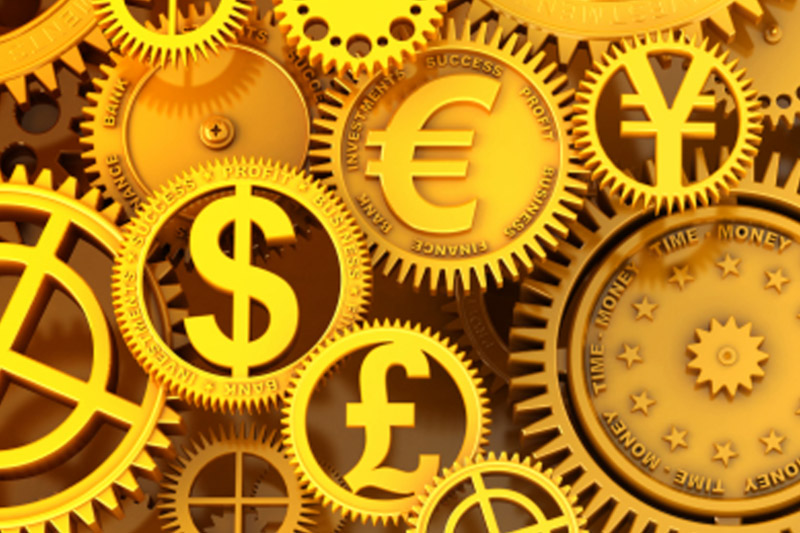Investing.com – The U.S. dollar was higher against most of its major counterparts on Tuesday, while the euro came under pressure ahead of a meeting between German Chancellor Angela Merkel and French President Nicolas Sarkozy later in the day.
During European afternoon trade, the greenback was higher against the euro, with EUR/USD dropping 0.52% to hit 1.4368.
Preliminary data released earlier showed that German economic growth nearly stalled during the second quarter, increasing by a seasonally adjusted 0.1%, below expectations for a 0.5% increase.
A separate report said that the euro zone’s gross domestic product increased by a seasonally adjusted 0.2% during the second quarter, slowing from growth of 0.8% in the preceding quarter and below expectations for a 0.3% gain.
The greenback was also up against the pound, with GBP/USD dipping 0.1% to hit 1.6375.
The U.K. Office for National Statistics said earlier that the rate of consumer price inflation in the U.K. accelerated to 4.4% in July from 4.2% in June. Analysts had expected U.K. consumer price inflation to rise by 4.3%.
Meanwhile, the greenback was down against the safe haven yen and Swiss franc, with USD/JPY edging 0.15% lower to hit 76.72 and USD/CHF sliding 0.71% to hit 0.7789.
Elsewhere, the greenback was higher against the risk-sensitive Australian, New Zealand and Canadian dollars, with AUD/USD dropping 0.91% to hit 1.0410, NZD/USD falling 0.63% to hit 0.8276, while USD/CAD climbed 0.69% to hit 0.9866.
The Aussie was weighed after the minutes of the Reserve Bank of Australia’s August 2 meeting showed that policy makers extended a pause on interest rates due to global growth concerns.
The dollar index, which tracks the performance of the greenback versus a basket of six other major currencies, was up 0.41% to hit 74.24.
Later in the day, German Chancellor Angela Merkel and French President Nicolas Sarkozy were to meet in Paris to address the region’s sovereign debt crisis.
Meanwhile, the U.S. was to produce official data on building permits and housing starts, as well as reports on import prices, the capacity utilization rate and industrial production.
During European afternoon trade, the greenback was higher against the euro, with EUR/USD dropping 0.52% to hit 1.4368.
Preliminary data released earlier showed that German economic growth nearly stalled during the second quarter, increasing by a seasonally adjusted 0.1%, below expectations for a 0.5% increase.
A separate report said that the euro zone’s gross domestic product increased by a seasonally adjusted 0.2% during the second quarter, slowing from growth of 0.8% in the preceding quarter and below expectations for a 0.3% gain.
The greenback was also up against the pound, with GBP/USD dipping 0.1% to hit 1.6375.
The U.K. Office for National Statistics said earlier that the rate of consumer price inflation in the U.K. accelerated to 4.4% in July from 4.2% in June. Analysts had expected U.K. consumer price inflation to rise by 4.3%.
Meanwhile, the greenback was down against the safe haven yen and Swiss franc, with USD/JPY edging 0.15% lower to hit 76.72 and USD/CHF sliding 0.71% to hit 0.7789.
Elsewhere, the greenback was higher against the risk-sensitive Australian, New Zealand and Canadian dollars, with AUD/USD dropping 0.91% to hit 1.0410, NZD/USD falling 0.63% to hit 0.8276, while USD/CAD climbed 0.69% to hit 0.9866.
The Aussie was weighed after the minutes of the Reserve Bank of Australia’s August 2 meeting showed that policy makers extended a pause on interest rates due to global growth concerns.
The dollar index, which tracks the performance of the greenback versus a basket of six other major currencies, was up 0.41% to hit 74.24.
Later in the day, German Chancellor Angela Merkel and French President Nicolas Sarkozy were to meet in Paris to address the region’s sovereign debt crisis.
Meanwhile, the U.S. was to produce official data on building permits and housing starts, as well as reports on import prices, the capacity utilization rate and industrial production.
